Case Studies
-
(5,794)
- (2,602)
- (1,765)
- (764)
- View all
-
(5,073)
- (2,519)
- (1,260)
- (761)
- View all
-
(4,407)
- (1,774)
- (1,292)
- (480)
- View all
-
(4,157)
- (2,048)
- (1,256)
- (926)
- View all
-
(2,488)
- (1,262)
- (472)
- (342)
- View all
- View all 15 Technologies
ANDOR
- (1,732)
- (1,626)
- (1,605)
- (1,460)
- (1,423)
- View all 42 Industries
ANDOR
- (5,781)
- (4,113)
- (3,091)
- (2,780)
- (2,671)
- View all 13 Functional Areas
ANDOR
- (2,568)
- (2,482)
- (1,866)
- (1,561)
- (1,537)
- View all 127 Use Cases
ANDOR
- (10,333)
- (3,499)
- (3,391)
- (2,981)
- (2,593)
- View all 9 Services
ANDOR
- (503)
- (432)
- (382)
- (301)
- (246)
- View all 737 Suppliers
ANDOR
Please feel encouraged to schedule a call with us:
Schedule a Call
Or directly send us an email:
Compare
|
|
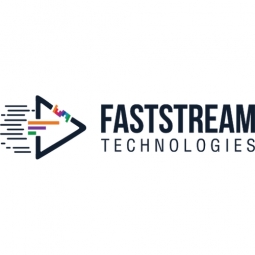
|
1. AUTOSAR RTE R4.0.3 Module developmentFaststream Technologies is providing Embedded designs along with the input configurations to the Tools team for captured requirements in RTE and documenting2. AUTOSAR Stack for Battery Management for Tier-IWe are providing the onsite support for RTE Interfaces Analyzing System Extract and preparation of Software and ECU Description Faststream has worked for the RTE Interface of CDD modules Worked on Integration of Modules and Testing of Stack3. AUTOSAR COMMUNICATION(Ethernet) stack integration and testingFaststream Technologies has configured the AUTOSAR Communication stack (Com, tcpip, soad, ethif, ethsm, pdur etc.) using tool K-SAR and integrated using GHS Compiler. Faststream’s Designer has used the Lauterbach Trace32 debugger in the MPC5784g microcontroller and tested the stack using python scripts. Faststream Technologies used the configuration management tools like SVN and RTC to store the code and test reports Our Engineers have implemented the update and configuration management (UCM) in AUTOSAR adaptive platform using C++14Faststream is providing services for updating the software and its configuration running on AUTOSAR adaptive platform Faststream communicates with dependent components like (Diagnostics, state management, and execution management) using SOME/IP
|
Download PDF
|
|
|

|
For many industrial operations involving the distribution of gas in, say, a manufacturing plant, there are numerous risks involved such as leaks. Like most operations of its type, such facilities can ill afford much downtime.
|
Download PDF
|
|
|

|
Designed and developed an ASIC for sensing to set up straight with the contact lens. The MEMS sensor which can be digitized through ASIC is reading and transfers the assessments back to the recorder with the same RF link used to power the device using load modulation techniques. By using a 0.35µm process, Faststream could incorporate power capture and conditioning, RF signaling, high linearity ADC, and digital control functionality on a single die within the limited power budget and at a low cost.
|
Download PDF
|
|
|
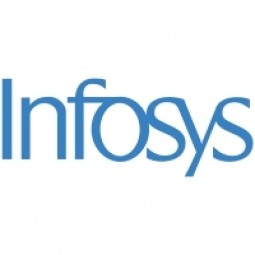
|
IIC - Smart Energy Management Testbed
Energy costs continue to increase globally, driven by the depletion of fossil fuels, geopolitical instability and disruptions in the global supply chain. At the same time, organizations are constantly thriving to reduce overheads and minimize the cost of the operations. Current challenges include lack of instrumentation to get the energy consumption details and lack of tools to visualize and analyze the energy consumption patterns. This hinders stakeholders from taking any meaningful action to optimize energy consumption and reduce the overall energy cost. GOALS • Develop an ‘energy command center’ that is able to provide visibility into energy consumption across the campus • Provide various tools to compare, predict and analyze energy consumption and performance • Provide IT governance with the help of alerts, notification, workflows, ticketing and augmented reality tools to facilitate the operations
|
Download PDF
|
|
|
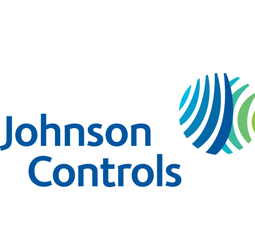
|
The building was equipped with four end-of-life Trane water cooled chillers, located in the basement. Johnson Controls installed four York water cooled centrifugal chillers with unit mounted variable speed drives and a total installed cooling capacity of 6,8 MW. Each chiller has a capacity of 1,6 MW (variable to 1.9MW depending upon condenser water temperatures). Johnson Controls needed to design the equipment in such way that it would fit the dimensional constraints of the existing plant area and plant access route but also the specific performance requirements of the client. Morgan Stanley required the chiller plant to match the building load profile, turn down to match the low load requirement when needed and provide an improvement in the Energy Efficiency Ratio across the entire operating range. Other requirements were a reduction in the chiller noise level to improve the working environment in the plant room and a wide operating envelope coupled with intelligent controls to allow possible variation in both flow rate and temperature. The latter was needed to leverage increased capacity from a reduced number of machines during the different installation phases and allow future enhancement to a variable primary flow system.
|
Download PDF
|
|
|

|
In designing and building Fermi, the General Dynamics C4 Systems business unit was faced with a challenge: it needed to provide an environment that could support rigorous testing by multiple Fermi subsystem groups before the spacecraft hardware was available.
|
Download PDF
|
|
|
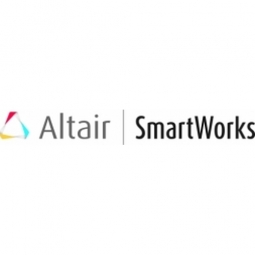
|
Pozuelo de Alarcón wanted to transform itself into a smart city. This was especially so due to demands from residents that the different administrations of the city make an effort to become more clean, efficient and optimize the use of city resources. The goals of this initiative was to decrease energy use, reduce CO2 emissions, detect and correct any excesses in water consumption and keep expenses in check.
|
Download PDF
|
|
|
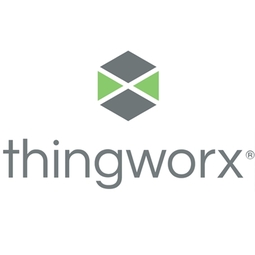
|
Recent studies have found that patients return to the hospital at an alarmingly high rate among those who are hospitalized for heart failure, almost one in four are re-hospitalized within 30 days. Such a focus has led to novel approaches to improve patient care and reduce the need for re-hospitalization. Many of these strategies depend on technologies that employ remote patient monitoring (RPM), using the Internet of Things (IoT) and cloud computing, so that their health care team can track their progress without needing them to come to the office. At the Hochschule Furtwangen University (HFU) in Germany, students across multiple disciplines are working to develop this RPM technology into mechanical devices to aid in monitoring patients remotely. Their idea is to utilize the Internet of Things to develop “smart” wheelchairs and walkers that will transmit patient information to a dashboard developed in PTC’s ThingWorx to monitor various parameters and develop alarms specific to each patient. Achim Bumüller, Senior Assistant in the Mechanical and Medical Engineering Department, is managing the project along with five other faculty members dedicated to each discipline such as electronics, informatics, and mechanical engineering. “Since our university is located in the Black Forest of Germany in Baden-Württemberg, the project was originally developed due to the need for remote monitoring in the small villages that are 20-30 kilometers from their nearest doctor or hospital; however, the target has grown to include the necessity of monitoring patients inside a hospital, nursing home or other areas,” states Bumüller.
|
Download PDF
|
|
|
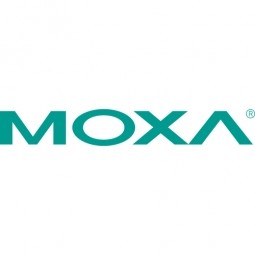
|
A company in the renewable energy industry needed to find an I/O device which can operate within the demanding requirements of renewable energy systems. Renewable photovoltaic systems are one of the most sustainable and reliable energy technologies available today, and today more and more countries are deploying solar farms to harness the power of the sun to generate a clean power with low CO2 emissions. As an expert in the design, development, installation, and maintenance of photovoltaic systems since 1998, the company provides a solar farm remote monitoring service via satellite communications. However, satellite bandwidth is very limited. Their ideal I/O device must be able to operate in a low-bandwidth environment and support scheduling functions for better light management. System Requirements - I/O device that can overcome low bandwidth limitations - Scheduling function support for lighting systems - SNMP protocol support for remote device monitoring and control
|
Download PDF
|
|
|

|
Vistara is a multi-tenant SaaS based product that serves thousands of customers, managing a large number of devices. Vistara runs on a highly scalable Big Data platform that processes over a billion data samples per day. Vistara is architected to be scaled out on demand. To ensure that Vistara can meet real-time performance demands, the product is tested thoroughly under variety of conditions and against a wide range of devices. Specific features, like Vistara’s performance data visualization, also require in-depth testing. Vistara’s QA team previously used only physical devices in their lab for testing. With this approach, it was very difficult to test product behavior under extreme load scenarios across devices from many different vendors. To address this need, Vistara decided to augment their lab with a network simulator. Vistara needed an enterprise grade network simulator that can simulate SNMP agent behavior as well as various console protocols such SSH/Telnet in depth. They also needed a tool that came with a large library of pre-defined networks that they could use as simulated test devices. Vistara evaluated the market for an enterprise grade network simulator. MIMIC SNMP and Telnet/SSH Simulator stood out in meeting all of its requirements.
|
Download PDF
|
|
|

|
Nova Scotia Power Inc. - GPS Functionality
On the Nova Scotia Power Inc. (NSPI) GIS Connectivity Project, field personnel travel on foot and by vehicle gathering data about asset locations and customer connectivity across the entire electrical distribution infrastructure. However, NSPI could not cover the company's extensive field operations. NSPI needed a secure mobile GIS solution that offered remote data transfer directly to its ARC GIS server software, without requiring additional travel and manual syncing.
|
Download PDF
|
|
|

|
Big Data and Predictive Maintenance
Predictive maintenance refers to techniques that help determine the condition of in-service equipment in order to predict and/or optimize when maintenance should be performed. Predictive maintenance is one of the most important benefits of the Industry 4.0 revolution.
|
Download PDF
|
|
|

|
McKinley faced several challenges to implement these product improvements: - Which device hardware is best? - How do they connect their products and put them online? - How will their products communicate? - Which sensor protocols work best? - How will they develop the proper visualizations? - How do we integrate it with their field service technology? - How do they set up rules and their associated actions?
|
Download PDF
|
|
|
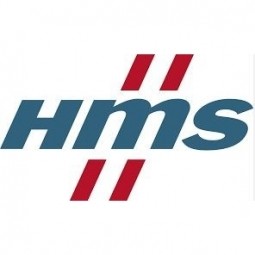
|
The round slitter blades that cut the paper in JSI’s machines are extremely sharp and can be dangerous to handle manually. Therefore, JSI and Millennium Controls designed a robotic blade-changing system using a robotic arm from Fanuc Robotics. The robot changes the sharp blades automatically, without operators having to touch them. But even if the blades can be changed automatically, operators still have to go up to the HMI of the machine which put them in close vicinity to the sharp blades. Therefore, JSI and Millennium Controls looked for a way to access the machine from a distance.
|
Download PDF
|
|
|
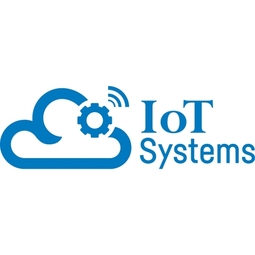
|
In 2016, Kevin Stoddard, a managing partner, had a problem. InControl’s customers required sensors on several equipment distributed across multiple sites and locations. To accomplish this, InControl needed a cost-effective solution fast. They also needed this solution to be intuitive for the equipment owners, highly secure, and broadly capable of delivering custom analytics to clients around the world.
|
Download PDF
|
|
|

|
The plant manager and safety teams needed a solution that provided near real-time visibility of gas detection and personnel location, with easy to understand visualization and alerting dashboards. This would enable them to improve productivity through decreasing the time taken to start work, optimize evacuation route planning, and to meet critical staff safety and compliance goals.
|
Download PDF
|
|
|
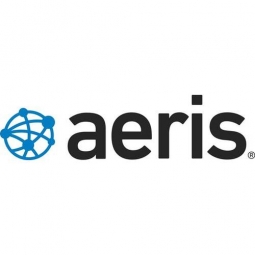
|
In competitive markets, companies from couriers to cleaning services are always concerned with profitability and maintaining top performance. One key to keeping costs reasonable is managing their fleets of service vehicles to improve route planning, monitor dispatches, reduce fuel costs, and track maintenance. To accomplish all this, Transpoco created SynX, a fleet management and GPS vehicle tracking solution that helps companies to synchronize their fleet of vehicles with their drivers and their corporate targets. The system allows clients to massively reduce fuel costs and optimise time through a complete fleet monitoring system. The SynX product gives a complete view of fleet operations to any organization with a vehicle on the road. Transpoco focuses on collecting all the data generated by the fleet and connecting it together in one place. Its customers don’t have time to delve through spreadsheets and reports, so the SynX software helps them implement changes in their fleets as easily as possible. By integrating this data, SynX literally synchronizes every aspect from drivers to vehicles, from maintenance to safety, and optimises relationships within teams. To help its customers achieve improvements in performance, cost reduction, and overall peace of mind, Transpoco itself had to grow quickly with both product offerings and geographic reach. This required broader connectivity coverage and more complete Internet of Things tools so SynX could give complete insights into crucial fleet data for decision-making.
|
Download PDF
|
|
|

|
DAS ran its operations on an aging on-premises legacy order management system, which experienced frequent outages and required regular maintenance and updates at considerable expense. The company's business processes also involved numerous manual steps that required significant staff time.
|
Download PDF
|
|
|

|
The touch screen soda fountain was introduced publicly by The Coca-Cola Company in 2009. The machine Coca-Cola Freestyle needed to feature over 125 different Coca-Cola drink products,and custom flavors while allowing users to select from mixtures of flavors of Coca-Cola branded products which are then individually dispensed.
|
Download PDF
|
|
|
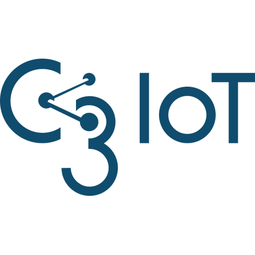
|
Global energy leader ENGIE is implementing an ambitious digital transformation strategy that is vital to the Fortune Global 500 company’s plan to confront the major challenges posed by climate change and promote people’s access to reliable, innovative, socially responsible, low carbon, and decentralized energy. To do this, ENGIE plans to invest €1.5 billion in new businesses and digital over the next three years.
|
Download PDF
|
|
|
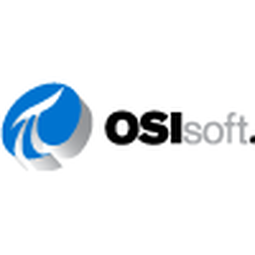
|
Inability to predict wind power supply limited how much power renewable energy sources could provide.
|
Download PDF
|
|
|

|
gridX has a requirement for over-the-air software updates for their gridBox devices and used the Yocto Project for their builds. The driver for the requirement was having the ability to quickly support new features, as well as deploying bug fixed and path known security vulnerabilities. New software updates with a US stick manually to all gridBox devices in the field would be prohibitively expensive and labor-intensive.
|
Download PDF
|
|
|
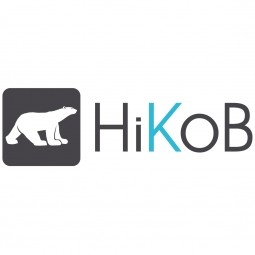
|
Always seeking innovation, BH Technologies was studying an energy saving solution for its public lighting equipment. The company based in Grenoble (France) wanted a simple and autonomous system with high-level accuracy vehicle detection to be integrated with its public lighting control solution.
|
Download PDF
|
|
|

|
FRoSTA AG is the German market leader in frozen fish and convenience foods and operates a fully automated raw materials warehouse in Bremerhaven, staffed by 600 employees. To run its warehouse, FRoSTA has a conveyor and four ASRS (Automated Storage and Retrieval Systems), controlled by a series of Siemens SIMATIC automated process controllers designed for warehouse applications.
|
Download PDF
|
|
|
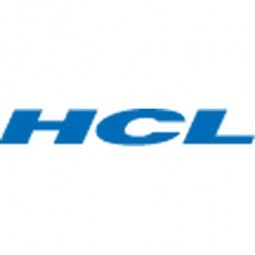
|
The client faced challenges in their attempt to improve patient care through objective data gathered from smart products such as Apple Watch, Fitbit, Carbon, and Samsung Gear which relates to patient compliance with prescribed medication regimen and their lifestyle patterns. The client was searching for an appropriate analytics algorithm which would help them gain actionable insights from the unstructured data. The backend came with a hive table which helped import data to the Hadoop environment. The company faced roadblocks in extracting behavioural context over time to tailor treatment according to the needs of patients with Serious Mental Illnesses (SMI). They aimed at developing a passive sensing mobile application which would enable full control and surveillance of the patients.
|
Download PDF
|
|
|
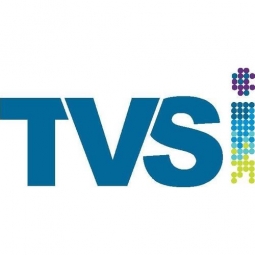
|
The client wanted the system to go-live in a short duration of time and it is very critical for them to do this before their production. They wanted a strong SAP (System Application and Products) implementation partner with expertise and experience in the manufacturing domain, especially with expertise in the automotive and Supply Chain space.The client wanted their SAP system to be aligned with their business processes and wanted to derive maximum benefits out of their SAP investments. The client was very particular about having a robust and operational SAP system much ahead of their production timelines.
|
Download PDF
|
|
|
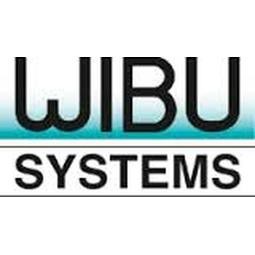
|
When you’ve developed innovative, groundbreaking software that brings emotion to the gargantuan Godzilla on the big screen or adds life to leading video game characters to the delight of serious gamers, protecting your intellectual property from counterfeiting and reverse engineering is paramount. When evaluating licensing and IP protection vendors, Faceware Technologies, Inc. turned to Wibu-Systems’ CodeMeter to protect their valuable intellectual property that was years and over $40 million USD in the making.
|
Download PDF
|
|
|

|
Fuel delivery has always had some built-in inefficiency. Like most fuel and lubricant distributors, Retif Oil & Fuel followed a keep full model when restocking fuel tanks and was spending too much money topping off customer fuel tanks and making emergency deliveries. Without an accurate view of customer fuel stocks it was impossible to determine who needed fuel or how much they actually needed.
|
Download PDF
|
|
|

|
The possibilities of the Internet of Things are endless and nothing demonstrates this better than one of FW’s most unique projects – a solar-powered camera solution for monitoring fish. Fish researchers worked with FW to integrate a camera system into the customer’s existing equipment installed at the end of a pile dike along the Columbia River. The camera system provides a live video feed of the fish detection array (mounted below the water surface) and surrounding water and weather conditions.
|
Download PDF
|
|
|
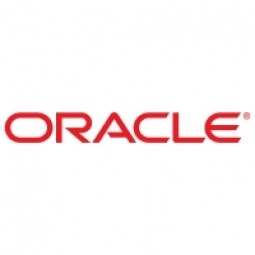
|
Canon Processes Data from More Than 1 Million Printers 5x Faster
Canon wanted to build an infrastructure to enable IoT system to process large amounts of data received from more than 1 million multifunction printers, and support 2x anticipated growth in the number of printers connected to the IoT, and ensure migration to the IoT platform to minimize disruption to global office-products business operations, and deploy a easy-to-manage disaster recovery system to reduce the switchover time in the IoT environment.
|
Download PDF
|
